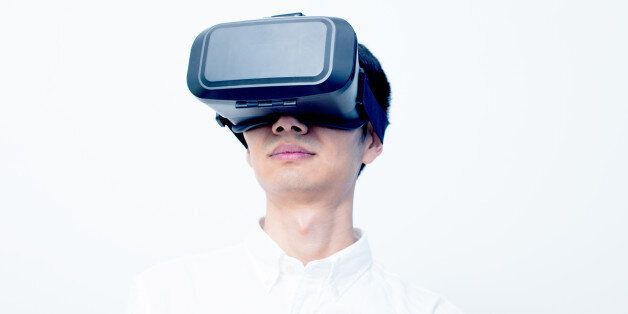
Sitting just of off a drab ring road, under the ceaseless roar of airplanes taking off and landing at London's Heathrow airport stands a large imposing yet strangely anonymous building. It is only on closer inspection that you start to notice the intimidating 20ft razor wire covering fences that surround it beyond its facade. This is Harmondsworth Immigration Removal Centre, Europe's largest detention centre.
I am here to meet a detainee and talk to him about the film I am making, the film that will become the virtual reality documentary Indefinite. Made in spring 2016, this film will bring me into contact with a world I never knew existed, and will challenge my own perception of the country I thought I knew. Most of all it will introduce me to some extraordinarily resilient and brave people who are ready to speak out and reframe the narrative on a detention system that feels like it is not working for anyone.
Immigration detention is not unique to the UK, but it is the Government's reluctance to put a time limit on detention that is most troubling. Depression, self-harm and lasting psychological damage are all by-products of a system that has no time-limit. It is reshaping the people within its walls, stripping them of their identity, breaking up families, and ultimately damaging our society as a whole.
Our challenge was how to visualise a system where access is not readily granted to press or filmmakers, and how to bring the words of our contributors to life when most did not want to be filmed or identified. In many ways VR with its qualities of immersion, presence, and interactivity felt like the perfect medium for this subject matter. This was not a film where you needed to just see the experience of the detainees, but instead feel the experience and get closer to the emotional truth of their journey through the detention estate. The power of VR for me has always been in the non-literal application of the medium, where the visuals and sonic landscapes combine to get closer to the ethereal nature of dreams and memory. It is here that a new interpretive space exists that filmmakers and journalists can explore to make their audience understand and connect with the truth of the story they are trying to tell.
We are still in the hessian days of this new VR world; with tech companies, broadcasters, and creators all vying for space in a new frontier of a medium that no one yet fully understands. What is becoming clear though is that for those of us that want to connect audiences to important human stories with social impact, that this medium offers us a great opportunity to give a voice and a heartbeat to subjects that should matter to everyone.
It is heartening to see that the interactive medium of VR is starting to be embraced by the wider public, through the commitment of forward thinking publishers like the New York Times, The Guardian and the BBC. It is through partnerships with these sorts of media giants, that VR content can start to make it out into the wider world, which in turn will help this industry start to create ever more ambitious and startling advances in storytelling with emotional impact.
The continuing development of VR filming techniques such as volumetric capture, the use of spatial sound and the near-future integration of haptics; means the toolset that documentarians and journalists have at their disposal is getting even wider. With the adoption of VR in the mainstream we are therefore on the cusp of some very exciting, and very important developments in the way we as a society tell stories to each other, and communicate our shared human experience.
As we start a new year I am reminded of the defiant protest chant outside Yarls Wood detention centre that closes the film Indefinite; "No human is 'Illegal'". It is a sentiment, perfectly expressed, that flies in the face of the rhetoric of fear and division that has dominated the political landscape in recent times. My hope is that this film and the burgeoning work of VR journalists and documentarians will play a small part in a reaction that champions compassion and solidarity with those most vulnerable in our society.
The VR film "Indefinite" is available to watch on the New York Times VR app, and on the New York Times Op Doc website.
Darren Emerson is the co-founder of VR production company VR City, and is a VR film director.
For more information, please visit http://vr-city.com/